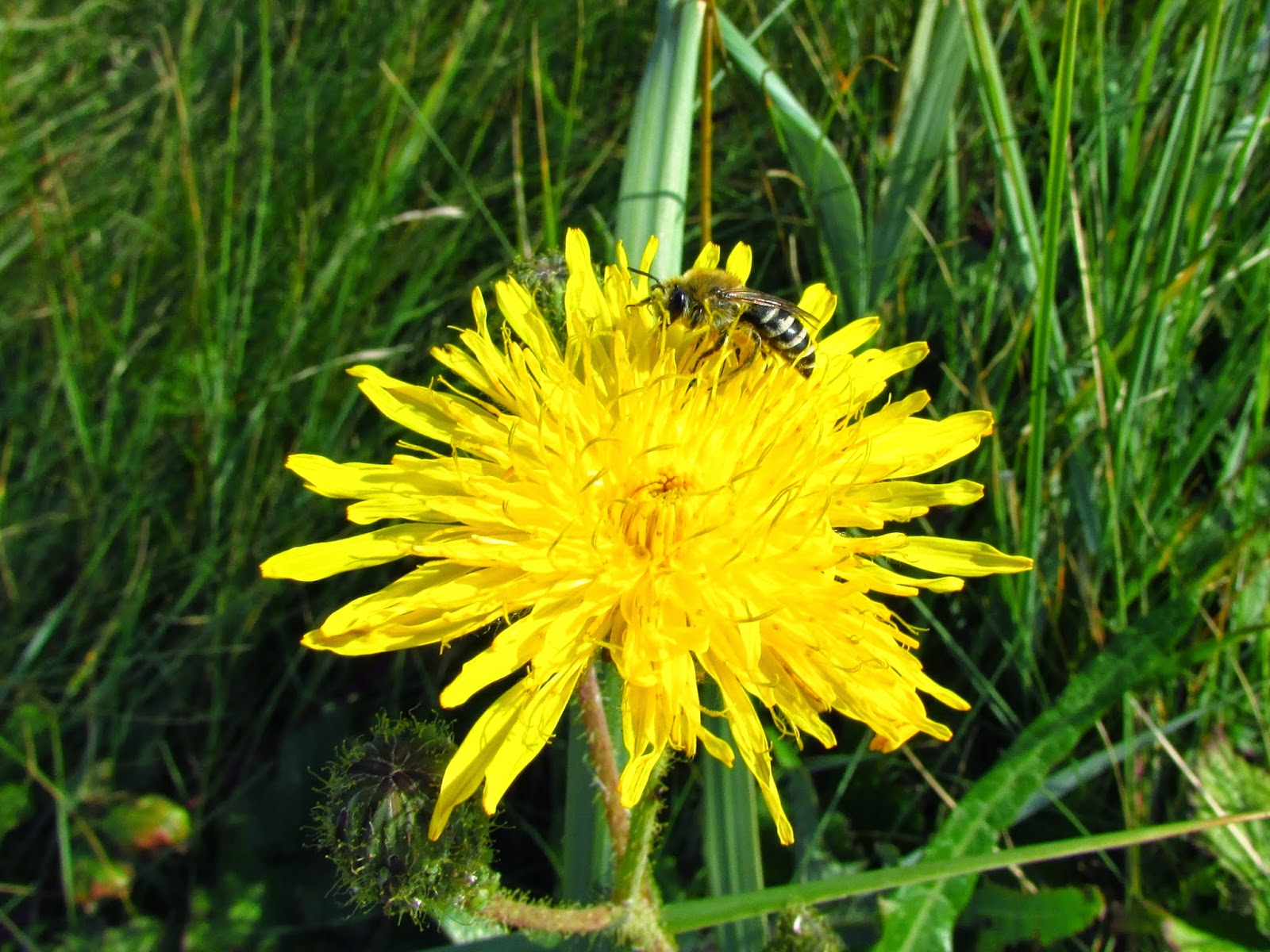Having missed the Migration Festival this weekend, and given the pleasant weather, I decided to head to Spurn this morning. There were many Swallows and House Martins over the Blue Bell, and a Pied Wagtail and a flock of Linnets on the car park. A couple of goldfinches fed on the seeds of haws on the hedge, handling them with their feet.
I walked over the seaside cliff towards the Warren. The sea has eroded the cliff quite a bit since my last visit and sand and dune vegetation is invading the path. Yellow wagtails fed by the cows. In the next field there were many Whinchats and Meadow Pipits, and a Kestrel hovering near the Warren.
I hadn't visited since the storms that cut off the peninsula and I decided to reach the breached area. It is now a low lying beach, which looks like it is still often breached, with the road now gone. A couple of Little Egrets fed on the saltmarsh, taking advantage of the pools cut off by the low tide. A Wheatear sat on a rock. I walked back on the estuary side, but the path disappeared at some point, so I had to go back onto the road. Shelduck and redshank fed on the saltmarsh, but, with no telescope, could see little else, as many birds where distant with the low tide. I took Canal Scrape. A buck Roe Deer fed on the long grass on a field, raising his head every now and then. At some point it walked to the middle of the field and sat down, only its antlers sticking out from the grass.
A photographer revealed the position of a Pied Flycatcher. A female Redstart in another garden was a nice surprise.
Several birdwatchers I met mentioned the Wryneck in Beacon Lane, so I headed towards it. No trace of it. I had a light lunch on the dunes and before leaving I decided to walk on Beacon Lane again, just in case. Then the Wryneck landed in front of me, on a gate, not four meters away from me. I could take several shots of it on the gate and then on a tree. I got to see another Pied Flycatcher in a garden by the Blue Bell, where a Spotted Flycatcher disputed the best positions in the garden with it, and with this it was time to go back home, with a feeling that I hadn't quite missed the weekend party. What a great way to end the trip.
Linnets
young linnet?
Yellow wagtail right by the cow's head
Whinchat
Flock of Whinchats
Sea Aster
Meadow Pipits
Male Swallow
A view towards the lighthouse
The breached part of the spit where the old road was, looking towards Spurn (island!?). The lighthouse on the far right
Little Egret
Little Egret
Wheatear
Jellyfish
A small bee likely Colletes halophilus, a species that is strongly associated to Sea Aster and nests in stabilised dunes (thanks to Ian Beavis for the likely ID).
Shelduck and Redshank
A very approachable buck roe deer
He sat down after feeding, only the tips of its antlers visible amongst the grass.
Sunbathing woodpigeon
Pied Flycatcher
Pied Flycatcher
Female Redstart
Young Starlings
Wryneck
Spotted Flycatcher































































